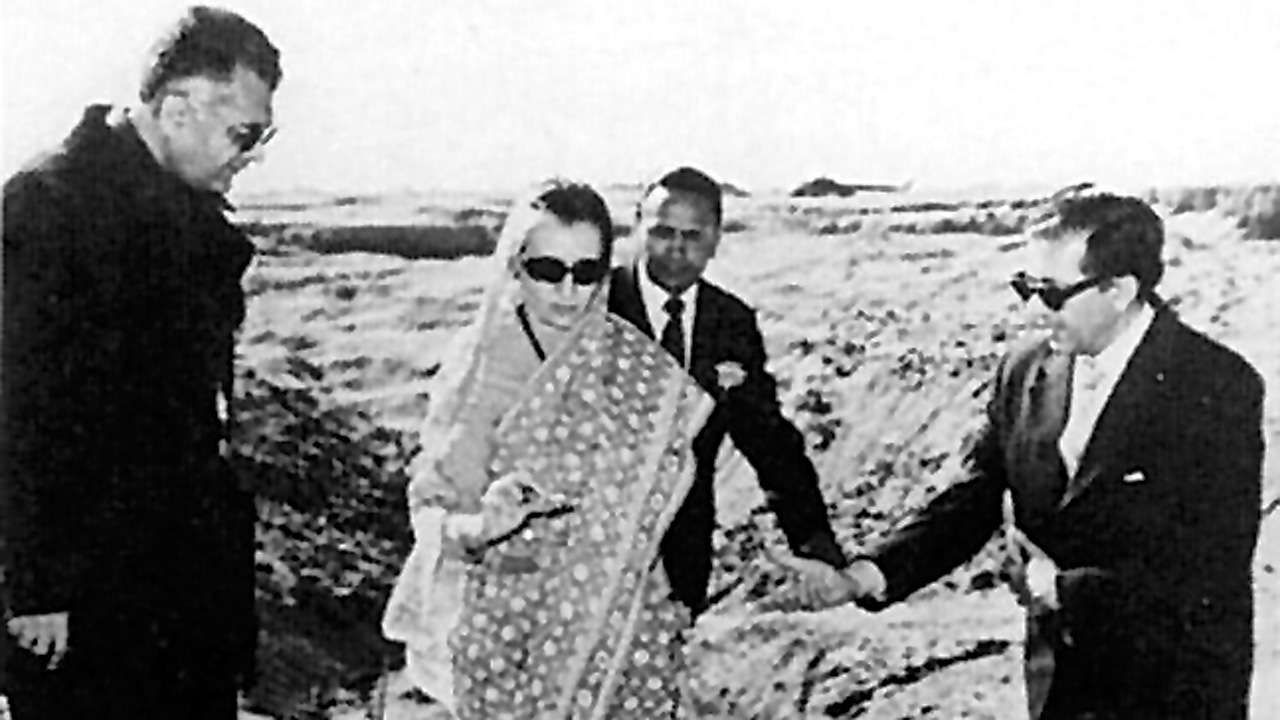
In the scorching summer of May 1974, India decided to take a giant leap forward by conducting peaceful nuclear explosion, the operation aptly entitled, Smiling Buddha. The name of the operation signified that although India was conducting a nuclear explosion, it was not to threaten any other country, but to ensure its own safety and power in the comity of nations.
India’s nuclear programme kicked off just a year after the Independence in 1948 with the formation of Indian Atomic Energy Commission under the Department of Scientific Research. During the initial years, the government of the day wanted nuclear energy to be used for peaceful or non-military purposes. The primary reason for the reluctance to assume an aggressive posture was that as a newly independent Third World nation, India did not want to be seen as an aggressor, particularly to neighbours like Pakistan and China.
The second reason was that the deep-rooted influence of Gandhian values like peace and non-violence (ahimsa) largely guided political decision making in the country.
India’s first Prime Minister Jawaharlal Nehru, who considered himself a firm disciple of Gandhi, was against India taking the nuclear path. However, under the able leadership of Dr Homi Jehangir Bhabha as the chairman and father of the Indian nuclear programme, there was never any doubt about the capability of Indian scientists to turn this country into a nuclear power state, much before it did so in reality.
The question was never about the ‘capability’ but the ‘intent’ - or more like the ‘political intent’ of those in power. The involvement of public opinion in such sensitive issues related to national security was negligible, which more or less is still the case.
Back in the 1950s and 1960s, the then Nehru government lacked the political intent to be realistic, choosing instead an idealist path for the young democracy. This approach came with huge political and military costs for India, in both the short and long term.
In the short run, India faced a humiliating defeat in the 1962 Sino-Indian War. Had India been a nuclear power state back then, the cost of deterrence for China would have been much higher, thereby resulting in a no war situation.
Secondly, deciding to be a non-nuclear power state during that era meant losing out on a chance to become a regional hegemon, a position that China acquired swiftly because of India’s inaction and political unwillingness.
Ultimately in 1974, tests were conducted at Pokhran under the decisive leadership of then Prime Minister Indira Gandhi, who saw an opportunity for India to ride on the momentum of the decisive victory against Pakistan in 1971. On May 18, 1974, India conducted its first test, a plutonium implosion device in Rajasthan’s Pokhran desert.
The use of peaceful nuclear explosion technology was in vogue during the 1950s and 1960s with superpowers using nuclear explosive technology for developmental and industrial applications like civil engineering projects, deep sea mining and so on.
Pokhran 1 was a landmark moment in India’s nuclear history. It showcased India’s long underlying intent to become a nuclear weapons state to a great extent, which was later realized fully in 1998 when the country became a full-fledged nuclear power.
Pokhran-1 tests saw great coordination between two institutions - the Bhabha Atomic Research Centre (BARC) and the Defence Research and Development Organization (DRDO). These two institutions were developed over a period of several years to ensure that when the time comes and the situation demands, the scientific teams of these organizations are in a position to deliver successfully. In hindsight, Pokhran-1 also proved to be a litmus test for these institutions, which continue to be important cogs within India’s nuclear wheel.
Another positive of the nuclear explosions in 1974 was its ‘surprise element’, as they caught all major international powers, off guard. The element of secrecy, which was necessary to conduct such a test, was paramount. There can be little doubt that Pokhran 1 is a milestone in India’s history that needs to be remembered proudly even 45 years later.
Author is a Senior Research Fellow at the School of International Studies, JNU